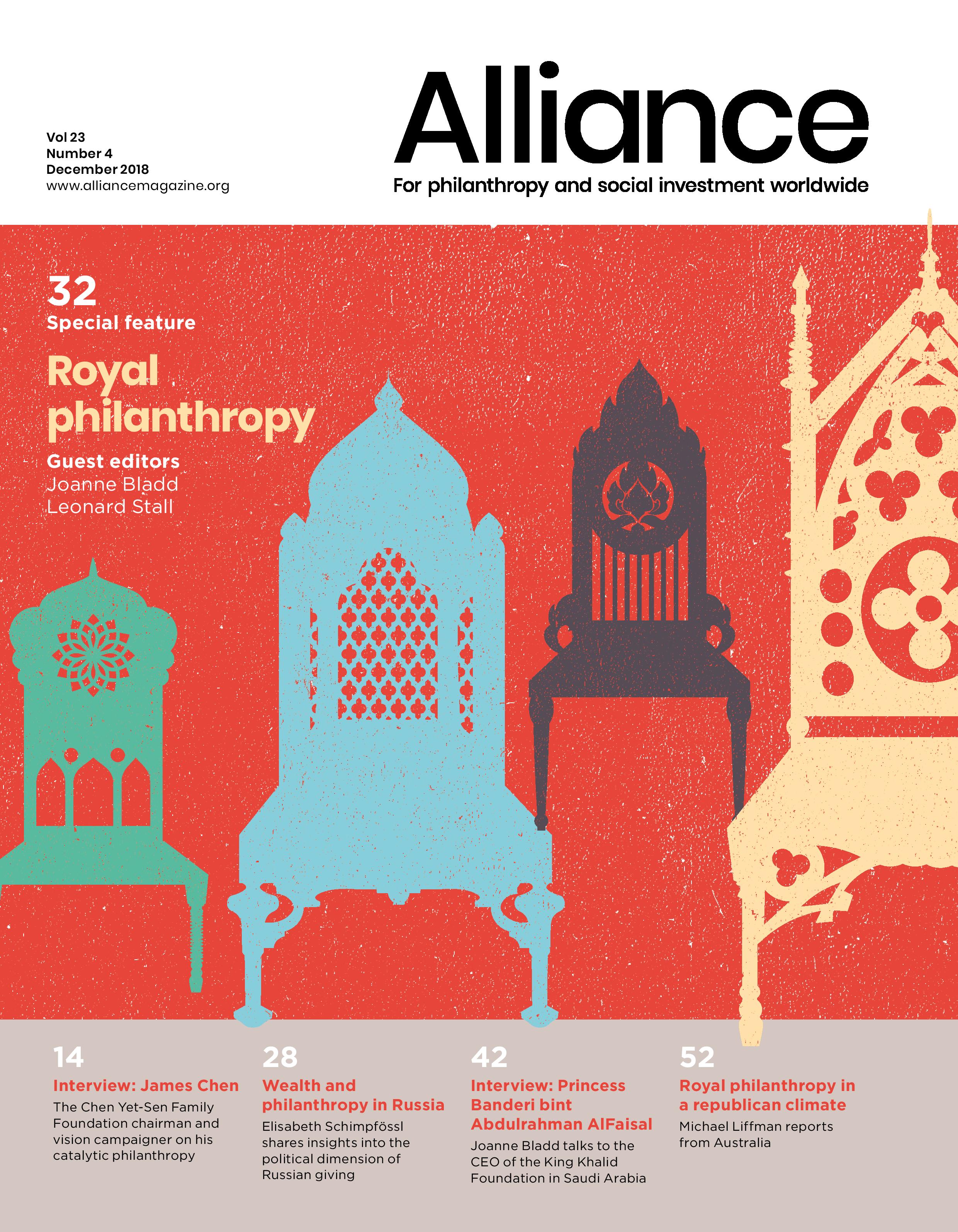The Mary Foundation set up by the crown princess is adopting a catalytic approach to difficult social issues, writes Jakob Thomsen
When the Danish Crown Prince Frederik married Australian Mary Elizabeth Donaldson in 2004, the wedding presents included a 1.1 million kroner (£129,000) cheque from the people of Denmark and Greenland. This ‘people’s gift’ laid the cornerstone for a new type of royal philanthropy in Denmark, the Mary Foundation.
With the people’s donations and substantial grants from co-founders, including global companies such as Carlsberg and Lego, the Mary Foundation now has capital of 180 million Danish kroner (£21 million). Crown Princess Mary’s approach, public profile and popularity play an important part in the strategy and the tools available.
How it works
Established in 2007, the foundation has adopted a catalytic model which marks a break with the other foundations from the Royal House.
One of the foundation’s flagship projects is ‘Free of Bullying’, which it runs in close partnership with Save the Children.
‘The Mary Foundation is different in the sense that we are involved in the entire process surrounding projects,’ says foundation director, Helle Østergaard. ‘We know our professional areas well, we identify an issue and evaluate whether there are experiences internationally that we can build on or whether we need to start from scratch. Thereafter we enter into a dialogue with potential partners, which would typically be an NGO. From there we develop the project together.’ At that point, too, the foundation looks for partnerships from other foundations so that the Mary Foundation finances a small part of the project, and the rest comes from one or more other foundations.
Putting bullying on the agenda
The foundation’s main aim is to combat social isolation, a choice of area in which the crown princess’s personal interest ‘weighed highly’, says Østergaard. Bullying and wellbeing was chosen as the first focus area, followed by domestic violence. The third area, loneliness, was decided in 2011. A sharp focus on these three areas is one of the consequences of the catalytic strategy. When the Mary Foundation was established, inspiration was sought from other foundations and it quickly became clear that if the foundation was to spark significant change, it required a focused approach on specific areas within the rubric of social isolation.
The crown princess is involved in the foundation’s running. As acting chair of the board, the secretariat meets weekly with her. She also takes an active part in the foundation’s activities.
One of the foundation’s flagship projects is ‘Free of Bullying’, which it runs in close partnership with Save the Children. When the Mary Foundation took the initiative for the anti-bullying campaign, there were no other actors working preventively on the issue. There are now projects in over half of the country’s day-care institutions and approximately 40 per cent of its primary schools. It has further been tailored and extended to Greenland, Estonia, Iceland and the Faroe Islands.
‘The project has become so widespread because we have continued to develop it and communicate about it. It means that many people are involved – teachers, childcare professionals, children, parents and grandparents. In this way we have spread the message and put bullying on the agenda in Denmark,’ says Østergaard.
Governance and royal involvement
The crown princess is involved in the foundation’s running. As acting chair of the board, the secretariat meets weekly with her. She also takes an active part in the foundation’s activities, for example when there is a need to focus public attention on some of the difficult social issues it is grappling with. ‘We are aware that this is a unique opportunity we have in regard to the media, when we want to bring attention to one of the issues we work with,’ says Østergaard.
If the Royal House is going to justify its existence, it will also have to engage in the sort of issues and projects that mean something to people.
Inviting and coping with criticism
By dealing with difficult social issues, the Mary Foundation exposes itself to criticism, like every other foundation working to create societal change. Does such criticism pose difficulties for the royal founder? According to Dr Lars Hovbakke Sørensen, there is a risk that the areas in which the Mary Foundation works could become politicised, but he adds, ‘that is a risk you probably have to take as a Royal House in a modern society. Because if the Royal House is going to justify its existence, it will also have to engage in the sort of issues and projects that mean something to people.’
Yet, the foundation’s governing body is not open to ordinary citizens. There are two reasons for this. First, Danish foundation tradition and legislation puts a clear emphasis on the will of the founder. Second, the nature of the foundation’s work means that expert knowledge is required. However, Østergaard notes that the work seeks to involve ‘the people who are the target group for the projects. This can be women in crisis centres, people who have been lonely for longer periods, or teachers’.
A network of the ‘one-offs’
While the Mary Foundation has become an established part of the Danish professional foundation scene, and draws information and shared experience from that community, in one area the director has to look beyond borders to exchange experiences. Royal involvement makes the foundation unique in Denmark, but both the Norwegian and Swedish Crown Prince Couples have philanthropic foundations. The three foundations can meet and talk even though they have different goals and different ways of working. ‘There are of course some situations, with regard to the culture around the Royal Houses, that are different and that you cannot talk to anyone else about, and therefore it is nice that we can have a dialogue with each other,’ says Østergaard.
Jakob Thomsen is editor-in-chief of Danish philanthropy publication, Danmarks Fonde.
 This article is a result of a collaboration between Alliance magazine and Danmarks Fonde.
This article is a result of a collaboration between Alliance magazine and Danmarks Fonde.







Comments (0)